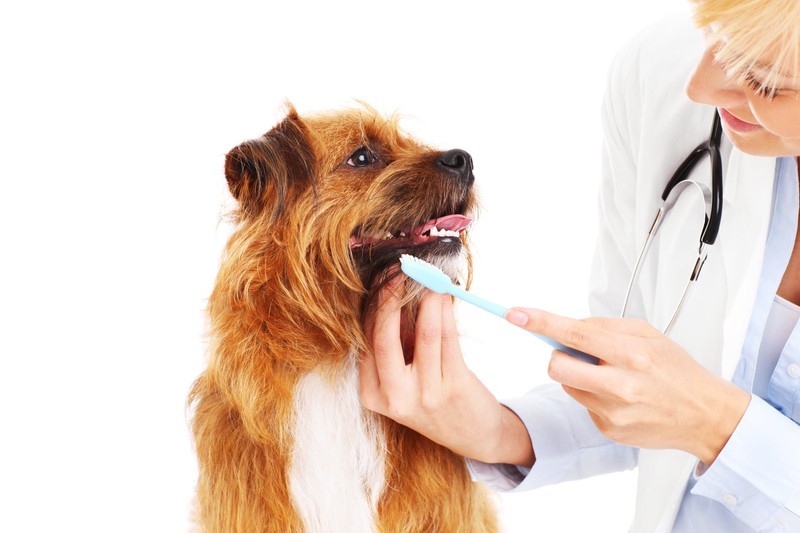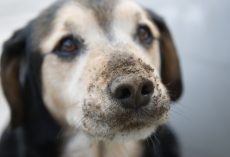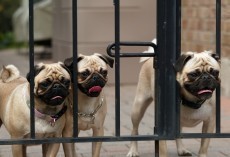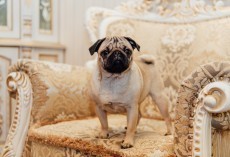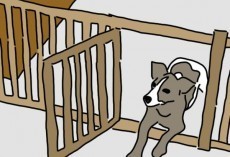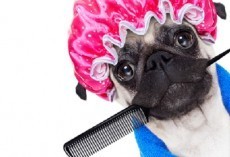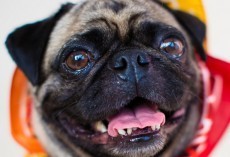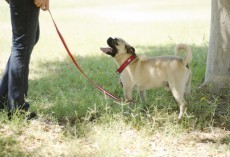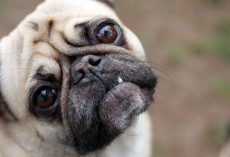Start getting your pooch into the daily habit of brushing her teeth by selecting a certain day and time. That way your pooch will know that it's time to brush her teeth during that time of day. As you get her used to reaching inside her mouth and eventually brush her teeth, be patient and take your time.
Why It’s Important
Brushing your dog’s teeth isn’t just about fresh breath. It’s an essential part of good oral care, and good oral care is important to your dog’s overall health. Although most people aren’t aware of it, periodontal, or gum disease is a common, serious problem in dogs. Yet brushing your dog’s teeth can prevent it! Periodontal disease is irreversible, so now is a great time to get started on a regular oral-care regimen for your dog. Prevention is the key to keeping him healthy and happy.When to Do It
It’s ideal to brush your dog’s teeth daily, just like you brush your own. However, if your schedule doesn’t allow that, aim to brush your dog’s teeth at least several times a week.
Smaller dogs and brachycephalic breeds—dogs with flat or short, broad snouts, like pugs and bulldogs—may need more frequent brushing.What You’ll Need
The Brush
Choose a tool that you’re comfortable using.The Paste
Purchase toothpaste made for dogs from a pet store or from your veterinarian. Pet toothpaste comes in a variety of flavors, including liver, mint, chicken and peanut butter. You may need to experiment with a few flavors to find out which one your dog prefers.How to Brush Your Dog’s Teeth
Your dog will probably find the sensation of you poking around in his mouth strange.
Take it slow. Introduce tooth brushing in small steps so that your dog doesn’t get overwhelmed and upset.Fingers are fine Before using a brush or paste, teach your dog that tooth brushing can be fun by first getting him used to having your fingers in his mouth.
1. Gently put one hand underneath your dog’s chin, letting his head rest in your hand. Then put the other hand over the top of your dog’s muzzle, as though you were going to open his mouth.
2. Repeat Step 1, but instead of releasing your dog right after you take hold of his muzzle, use the hand on top of his snout to gently lift his lips.
3. Now you’re going to get your dog used to letting you hold his muzzle and look at his teeth longer. Repeat Step 2 as described above—but slowly increase the time you hold your dog’s muzzle in your hand and lift his lips.
4. Position your hands as before—one under your dog’s bottom jaw and the other over the top of his muzzle. Instead of just lifting his lips, open your dog’s mouth about an inch. Right after opening his mouth, touch your finger inside his mouth for a second and then release your dog and give him a treat. Repeat 8 to 10 times.
5. Over a week or so, gradually increase the time you hold your dog’s mouth open and keep your finger inside along his teeth and gums.
6. If your dog struggles during any of the exercises above, gently but firmly continue to hold his muzzle until he stops.
Start Brushing
1. Put some toothpaste on the brush. Placing one hand over the top of your dog’s muzzle, gently lift his lips. With your other hand, brush or rub a few teeth.2. Repeat Step 1 two or three times a day for one to two weeks. Each day, slowly increase the time you spend brushing.
3. When your dog seems comfortable about you brushing all his teeth while his jaws are closed, you can start to open his mouth.
4. At this point, you can start alternating between brushing the outer and inner surfaces of your dog’s teeth during brushing sessions. It’s best to keep brushing sessions short (aim for about five minutes), but brush daily if possible.
As you did during the handling exercises above, gently but firmly hold your dog’s muzzle if he struggles during brushing. As soon as he stops struggling and holds still for one second, release his muzzle. You may have progressed a little too fast for him, so make brushing sessions a little shorter for a while until he seems comfortable again.
Additional Tips
• Although periodontal disease primarily affects dogs over five years old, it’s best get your dog used to regular brushing when he’s young.• Take your dog to the veterinarian for an annual checkup, which should include an oral exam. As your dog ages, your vet may recommend professional cleaning, which is usually done under anesthesia.
• Feeding your dog hard kibble and treats instead of canned food alone can help prevent the build-up of harmful plaque. Providing plenty of edible chews, such as rawhide, pig ears and natural bones, as well as hard, inedible chew toys, like Nylabones® and Greenies® Smart Chews™, can also reduce plaque on your dog’s teeth.
• Some people choose to learn how to scale or scrape their dogs’ teeth using a special dental tool that’s similar to instruments used by human dentists.
• If you want help teaching your dog to let you brush his teeth, consult a Certified Professional Dog Trainer (CPDT).
• If, at any time, your dog shows signs of fear or aggression—such as trembling, trying to get away or hide, drooling, panting, whining, freezing, staring, growling, snarling, snapping or biting—contact a qualified professional for help.
What NOT to Do
• Do not use products made for humans to brush your dog’s teeth. Human toothbrushes and toothpastes can be harmful to your dog.• Do not try to overpower your dog or punish him if he resists tooth brushing.
If your pooch starts to get used to you brushing her teeth, reward her for responding positively. Brushing a dog's teeth is not always a fun experience for the pooch, but it can become a happy experience with a little reward. There are more specific tips on how to gradually work up to brushing your pup's teeth on ASPCA.
A pooch should not pant or get nervous during the process and if she does you need to start at square one. Be ultra patient and caring as you get her used to touching her mouth, gums and brushing her teeth. In time, she should get used to it and be more accepting of you brushing.
